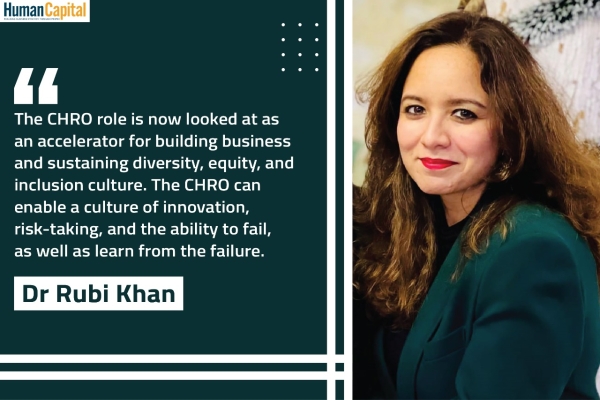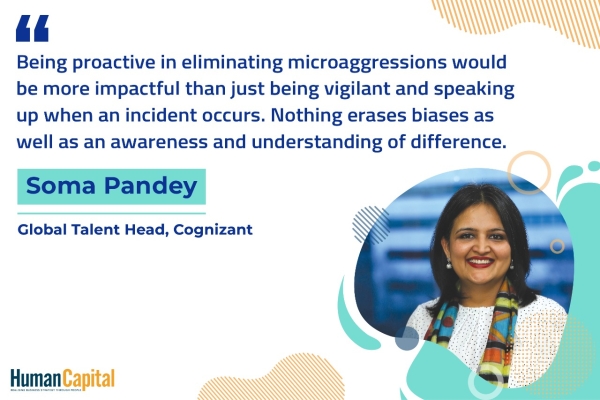Now more than ever, HR needs to continuously improve its capability to ensure that it remains relevant to the business. It must provide value that impacts business performance, the bottom line and a sustainable future. People analytics provides a way forward.
The COVID-19 pandemic has pushed HR to take on a more strategic role than ever before, where HR is now encouraged to use data and analytics to link people strategy to the business strategy and outcomes. To understand how to develop a people strategy, i.e. strategic workforce planning, it is essential to comprehend and implement people analytics as a strategic tool kit and a driving factor for this alignment.
What’s all the fuss over People Analytics?
Traditionally, HR has relied heavily on ‘intuition’ and ‘gut-feeling’ when it comes to making people decisions that impact the business. However, the influx of digital technologies, big data and the internet of things have allowed organisations to track progress and feedback from not only their customers but also their workforce. Furthermore, whereas previously leaders determined the value of the business by looking at the narrow financials of a balance sheet, now, more than 80 per cent of this value has shifted off the balance sheet and into the intangibles, i.e., intellectual, social and human capital. This is why the role of HR has transformed into that of a strategic partner to the business, where people analytics plays a key role in the process of business optimization.
What is People Analytics?
To understand people analytics, one must understand human capital measurement (HCM) and reporting. HCM and reporting are about highlighting the current workforce composition and past trends of key metrics through dashboards that may include Key Performance Indicators (KPIs). Analytics, on the other hand, looks into the future by analysing current trends and using statistics to model the effects of a particular outcome.
Reporting focuses on past trends, whereas analytics focuses on future insights that can mitigate risk and influence decision-making. There is a misconception that by only reporting human capital, you will be able to identify and drive actionable insights. Research shows that HR spends too much time focusing on basic reporting tasks to the detriment of analysing this data.
Getting Started with People Analytics
Before getting started with people analytics, it’s important to understand that this process is a journey, not a destination, which usually begins with reporting and moves towards predictive people analytics. Now, let’s have a look at the three most important steps to getting started on this journey:
(1) Identifying a Business Problem
HR has been blamed time and again of not understanding the business and focusing too narrowly on itself as a department aloof from the business operations. Hence, the first step in the process will be to identify a business problem that needs to be solved rather than an HR remit. Remember that people analytics is not about HR; it is about business performance and how to improve it. For this purpose, use the following six questions to assess and prioritise the business problem.
i. Is the project critical and important to the business?
ii. Is the data available?
iii. Is the data easy, inexpensive and not resource-intensive to access?
iv. Is the data clean and trusted ?
v. Are there significant risks if ignored?
vi. Is the project valuable in financial terms?
If you score “yes” on all six aspects, your business problem is worth investing your time and resources towards as this will create a high-impact and low-effort project, enabling you to focus on a quick win. Nevertheless, it’s always important to ask, “Why are we looking at our attrition rates, and how does that impact our business performance in terms of a financial impact?”
(2) Collaborating with the Business
This journey will most likely involve extracting people and business data from multiple disparate systems and unifying these disparate sources into one single repository. In some cases, you may not have harmonised definitions, metrics and measures throughout the business. Your role is to synthesise all the data and information into one whole system. This will require HR to move out of their silos, collaborate and learn from the wider business. As finance and marketing have already been on this journey of forecasting the future, there is much HR can learn from both their wins and their mistakes.
(3) Driving Continuous Improvements
People analytics is a process that requires continuous improvements on three levels: HR’s capability, data and technology. Although the process begins with reporting, this should move towards predictive people analytics that brings strategic foresight into the business. Throughout this process, HR will need to evaluate its own capability and ensure that it aligns with the business needs. Initially, we might find disparate and scattered data throughout the business, but HR must take the lead role in organising the data with clarity via dashboards accessible across the business as the process unfolds. It is also important to add the need for a people analytics leader who ensures that data-driven culture is cultivated in the organisation. Lastly, the key role in this whole process is technology. With old and clucking HRIS systems that provide nothing valuable to the business, HR may need to invest wisely on developing or outsourcing a people analytics solution that shows business results. All this is a continuous journey and should not be considered as an end to a destination.
With the rapid advent of artificial intelligence and machine learning, organisations are now seeking to make permanent connections between core HR functions, marketing, finance and business performance to improve organisational practices. Now more than ever, HR needs to continuously improve its capability to ensure that it remains relevant to the business. It must provide value that impacts business performance, the bottom line and a sustainable future. People analytics provides a way forward.
Follow and connect with us on LinkedIn, Facebook, Instagram, Twitter for latest HR news and insights.
.jpg)
Does your organisation support you in maintaining work-life boundaries?
Trending
-
SBI General Insurance Launches Digital Health Campaign
-
CredR Rolls Out 'Life Happens' Leave For Its Employees
-
Meesho Announces 30-Week Gender-Neutral Parental Leave Policy
-
Microsoft Unveils Tech Resilience Curriculum To Foster An Inclusive Future
-
60% Indian Professionals Looking For Job Change Due To COVID: Survey
-
SpringPeople And Siemens Collaborate For Digital Transformation Push
-
86% Professionals Believe Hybrid Work Is Essential For Work Life Balance: Report
-
Almost 1 In Every 3 People's Personal Life Affected Due To Work Stress
-
Meesho Rolls Out Reset And Recharge Policy For Employees
-
80% Of Talent Leaders & Academics Say Pandemic Changed Skill Needs For Youth: Report
-
Hero Electric Rolls Out 'Hero Care' Program For Employees
-
Human Capital In Collaboration With ASSOCHAM Hosts Virtual Conference
-
IKEA India, Tata STRIVE Collaborate To Create Employability And Entrepreneurship Opportunities
-
SAP India, Microsoft Launch Tech Skilling Program for Young Women
-
DXC Technology, NASSCOM Collaborate For Employability Skills Program
-
Lenskart To Hire Over 2000 Employees Across India By 2022
-
Mindtree Launches Learn-and-Earn Program
-
Tata AIA Extends 'Raksha Ka Teeka' To Its Employees
-
Swadesh Behera Is The New CPO Of Titan
-
NetConnect Global Plans To Recruit 5000 Tech Professionals In India
-
Hubhopper Plans To Hire 60% Of Indian Podcasters By 2022
-
Corporate India Needs More Women In Leadership Roles: Report
-
Aon to Invest $30 Million and Create 10,000 Apprenticeships by 2030
-
Tech Mahindra Launches ‘Gift a Career’ Initiative for Upskilling of Youth
-
40% Women Prefer Flexible Working Options in Post-COVID World: Survey
-
3 out of 4 companies believe they can effectively hire employees virtually: Report
-
Vodafone , CGI and NASSCOM Foundation launch digital skills platform
-
Odisha: Bank, postal employees to deliver cash for elderly, differently-abled persons
-
Skill India launches AI-based digital platform for "Skilled Workforce"
-
Hiring activity declines 6.73% in first quarter: Survey
-
70% startups impacted by COVID-19 pandemic
-
Bajaj Allianz Life ropes in Santanu Banerjee as CHRO
-
Over 70 Percent MSMEs look at cutting jobs to sustain businesses
-
93 Per Cent employees stressed about returning to office post-lockdown
-
Johnson & Johnson India announces family benefits for same gender partners
-
Indian firms turning friendly towards working mothers
-
Welspun India names Rajendra Mehta as new CHRO
-
Wipro partners with NASSCOM to launch Future Skills platform



Human Capital is niche media organisation for HR and Corporate. Our aim is to create an outstanding user experience for all our clients, readers, employers and employees through inspiring, industry-leading content pieces in the form of case studies, analysis, expert reports, authored articles and blogs. We cover topics such as talent acquisition, learning and development, diversity and inclusion, leadership, compensation, recruitment and many more.
Subscribe Now












































Comment